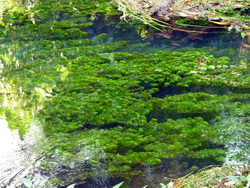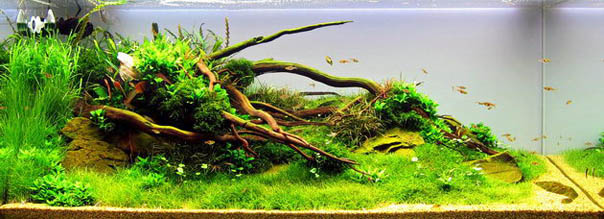Nutrients for a Planted Tank
We can bring nutrients into an aquarium in two different ways: via the substrate, and via the water. When choosing the right way for your tank, please take the preferences of your plants into consideration. There are those that take up nutrients mainly with their roots (and thus from the substrate), and those that absorb nutrients with their leaves, i.e. out of the water column. Generally speaking we can say that plantkeeping is made easier if you provide your plants with nutrients both ways so you meet the requirements of each type of plant. Intact natural waters with vigorous underwater plant populations usually have very low nutrient levels in the free water, which are replaced as soon as they are taken up by the plants, though. Moreover, the ground is an almost endless nutrient reservoir, and in the biomass itself, large amounts of nutrients are bound, too. This makes it difficult to draw direct conclusions for the artificial biotope in an aquarium. Nature may show us how things can work and under which (not always optimal) circumstances waterplants will grow, which survival strategies and adaptations enable waterplants to live in their habitats - however, plantkeeping in an aquarium should rather be modelled on modern gardening. Controlling the nutrient ratio and other growth preconditions enables us to cultivate plants very efficiently by satisfying their direct needs. The conditions in the habitat do not necessarily have to be imitated to achieve this.

Waterplants in an aquarium may be supplied with nutrients on a range of strictly limited to vastly abundant. In general, there are different (and differing) ways to provide waterplants with nutrients, as these organisms have proven astonishingly adaptable.
